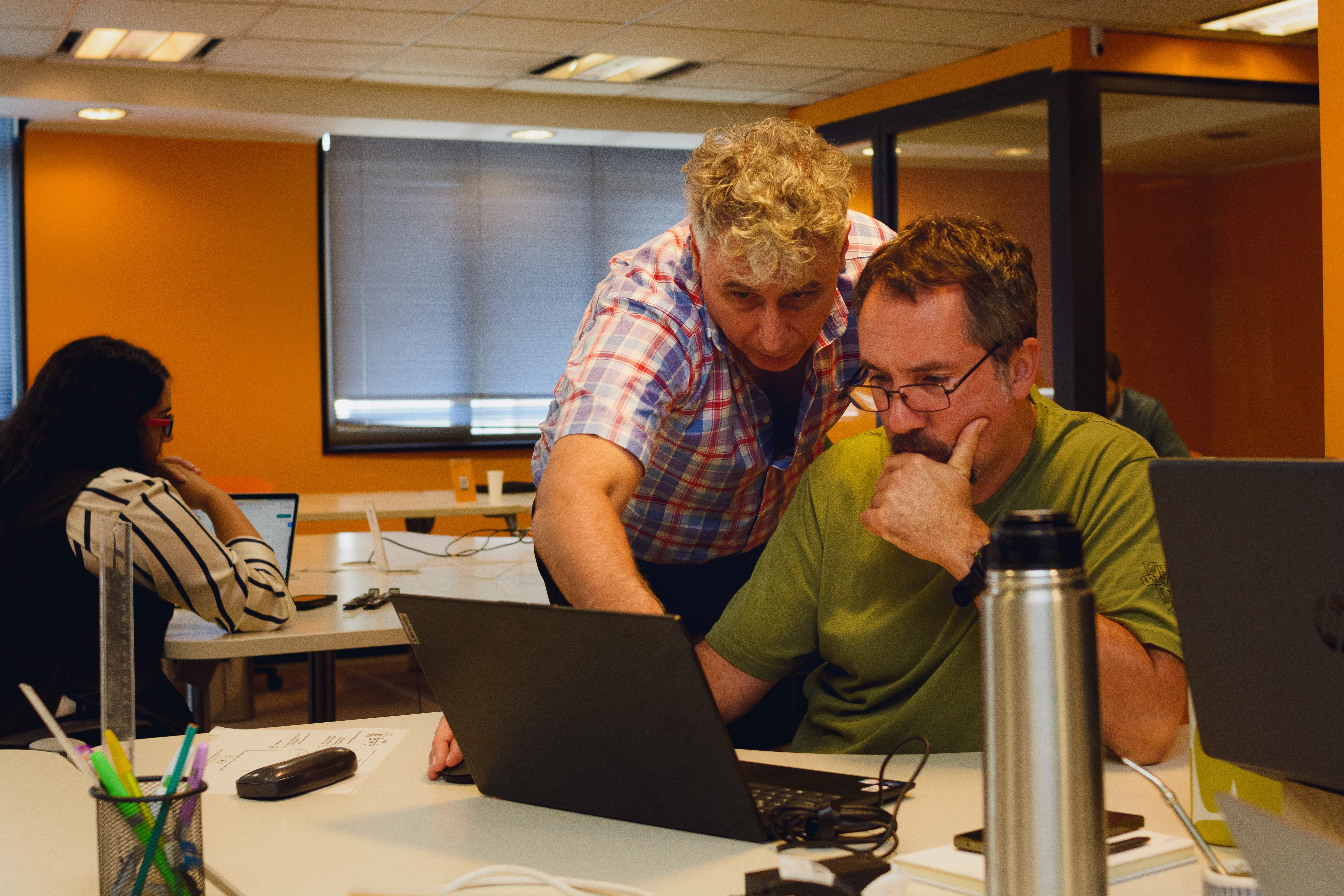
The morning coffee hadn't even cooled when Scott, AccelOne's CEO, found himself in the familiar dance of corporate governance. A leadership meeting in thirty minutes. Critical financial data from the last three months scattered somewhere in the digital maze of spreadsheets, email chains, and financial reports. The clock ticking.
"Does anyone have the Q3 revenue breakdown by client segment?" he typed into the leadership Slack channel—the third such message that week.
This scene played out daily across AccelOne's growing organization. Engineering insights lived in code repositories.
"Does anyone have the Q3 revenue breakdown by client segment?"
Client intelligence gathered dust in conversation threads. Sales materials floated through cloud storage like digital tumbleweeds. Each search became an expedition, each answer a small victory against the entropy of organizational memory.
For a company helping clients harness AI to solve complex challenges, the irony wasn't lost on leadership: they were drowning in their own information.
The Hypothesis
Rather than treating this as a typical IT problem requiring better file organization or more robust search tools, AccelOne's team approached it as a research question. What if artificial intelligence could serve not as a replacement for human expertise, but as an amplifier of institutional knowledge?
The hypothesis was deceptively simple:
Could an AI system, trained on internal communications and documentation, answer questions with the effective ness of a seasoned team member?
But unlike a human colleague, this digital teammate would never sleep, never forget a conversation, and never need to ask "Where did I put that file?"
The Laboratory
AccelOne approached the challenge with scientific rigor, treating their own organization as both laboratory and test subject. The first phase involved mapping their information ecosystem—a sprawling network of platforms, each containing fragments of the company's collective intelligence.
The team discovered what many organizations face: critical knowledge exists in the spaces between formal documentation. The real insights lived in Slack conversations where engineers troubleshot deployment issues at 2 AM, in Google Drive comments where sales teams refined their pitch strategies, and in the unwritten context that transformed raw information into actionable intelligence.
After blueprinting the companies information systems and software , they built the first Proof of Concept (POC) for what would become Vivian—not a chatbot programmed with predetermined responses, but an intelligent assistant connected to all of their internal data sources and trained to understand the unique language and logic of their business. The POC could field over 100 internal queries, from operational ("Who's leading the client delivery for Project Phoenix?") to strategic ("What's our positioning against competitor offerings?").
The breakthrough came not from the technology itself, but from the realization that effective AI requires more than advanced algorithms—it needs understanding of how knowledge actually flows through an organization.
The Transformation
Vivian emerged as something unexpected:
An AI that admits what it doesn't know. Grounded in verified internal data, she provides answers with citations and context, never venturing into the realm of artificial hallucination that plagues many AI systems.
When a team member asks about client preferences, Vivian doesn't guess—she surfaces the relevant customer research document and highlights the specific insights. When someone needs the latest product roadmap, she provides the most recent version along with who last updated it and when.
The transformation was immediate and measurable. Research shows that employees spend 1.8 hours daily searching for information—time that Vivian gave back to AccelOne's team. But the impact went beyond efficiency gains. The culture shifted fundamentally. Instead of hesitating to ask questions that might interrupt a colleague's workflow, team members began exploring their institutional knowledge with newfound confidence. The barrier between having a question and finding an answer had virtually disappeared.
The Revelation
What began as an internal efficiency project revealed a larger truth about the future of work. Organizations don't lack information—they lack the ability to effectively navigate their own intelligence. The most sophisticated AI models in the world remain useless if they can't access the specific knowledge that drives business decisions.
AccelOne discovered they had built more than a solution to their own problem.
They had created a blueprint for how AI can enhance human capability in business - rather than replace it.
The Evolution
Today, Vivian serves not only AccelOne's internal teams but has become a flagship offering for their clients. Legal departments use it to navigate regulatory documentation. Customer support teams deploy it to access product knowledge bases. Research and development groups rely on it to surface relevant prior work and prevent duplicated efforts.
Each implementation reveals new dimensions of the challenge AccelOne first faced:
How to transform scattered organizational knowledge into accessible intelligence. The scientific approach that birthed Vivian—treating internal challenges as research opportunities—has become AccelOne's standard methodology for AI projects.
The story of Vivian illustrates a fundamental shift in how we think about artificial intelligence in the workplace. The most powerful AI applications may not be those that perform entirely new tasks, but those that help us better leverage what we already know.
In an age where information abundance has become its own form of scarcity, the organizations that thrive will be those that can transform their collective intelligence into competitive advantage. They will be the ones who recognize that the future of AI lies not in replacing human insight, but in making it infinitely more accessible.

